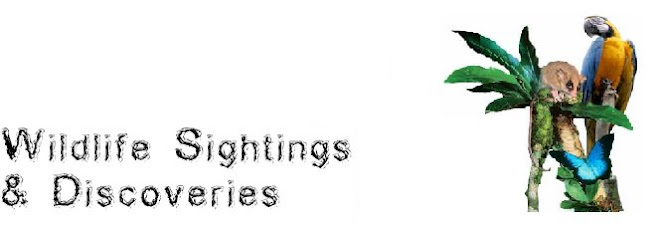Status: Critically Endangered
Population Trend: Decreasing
Found: Indonesia (Sumatra)
Range: Pongo abelii is endemic to the island of Sumatra, Indonesia. It is generally restricted to the north of the island, north of the Batang Toru river on the west coast of North Sumatra province (Wich et al. 2003). It was once far more widespread and populations occurred as far south as Jambi and Padang up until at least the mid 1800s (see Rijksen 1978). There were reports of its existence in some parts of West Sumatra province as recently as the 1960s. However, surveys by Wich et al. (2003) found no evidence of their continuing survival south of the Batang Toru river.
The majority of wild Sumatran orangutans survive in the province of Aceh (more formally known as Nanggroe Aceh Darussalam, or NAD), at the northernmost tip of the island. There are populations within North Sumatra province, but the largest of these also straddles the border with Aceh. Only two potentially viable populations lie entirely within North Sumatra province: West Batang Toru and East Sarulla, both near, but south-west of lake Toba (for precise locations see Singleton et al. 2004).
Within Aceh, almost all remaining forest patches of any size still harbour orangutans at the lower altitudes, but there are few, if any reproducing populations in the large tracts of forest above 1,000 m asl.
Population: The most recent estimate for Pongo abelii is around 7,300 (Singleton et al. 2004), occupying forests that cover 20,552 km², but of which only those regions below 1,000 m asl (circa 8,992 km²) harbour permanent orangutan populations. Each population listed in Table 1 is considered to comprise a single contiguous population, but increasing fragmentation may result in further subdivisions in the near future. All except Seulawah have been adopted by the UNEP/UNESCO GRASP (Great Ape Survival Programme: see Caldecott and Miles 2005) initiative as priority populations for conservation. A few small fragments of forest outside of those listed may still contain small numbers of orangutans but none are considered viable in the long term.
In addition to the above, original wild populations, a new population is being established in the Bukit Tigapuluh National Park (Jambi and Riau Provinces) via the re-introduction of confiscated illegal pets. This population currently numbers around 70 individuals and is reproducing.

Habitat and Ecology: The Sumatran orangutan is almost exclusively arboreal. Females virtually never travel on the ground and adult males do so only rarely. This is in contrast to Bornean orangutans (especially adult males) which more often descend to the ground. While both species depend on high-quality primary forests, Bornean orangutans appear better able to tolerate habitat disturbance. In Sumatra densities plummet by up to 60% with even selective logging (see Rao and van Schaik 1997).
Sumatran orangutans are primarily frugivores, but also eat leaves, insects (termites and ants) and on occasion, the meat of slow loris (Fox et al. 2004, Wich et al. 2006). Female home ranges are 800 to 1,500 ha. The true extent of male home range size is not fully known, although ranges in excess of 3,000 ha are inferred (Singleton and van Schaik 2001).
Females first give birth at about 15 years of age (Wich et al. 2004). Interbirth intervals are 8.2 to 9.3 years (compared with 6.1 to 7.7 years for P. pygmaeus; Wich et al. 2004, van Noordwijk and van Schaik 2005) and gestation lasts approximately 254 days (Kingsley 1981). Males exhibit bimaturism, whereby fully flanged adult males and the smaller unflanged males are both capable of reproducing, but employ differing mating strategies to do so (see Utami Atmoko et al. 2002). Longevity in the wild has been estimated at 58 years for males and 53 years for females (Wich et al. 2004).
Threats: This species is seriously threatened by logging (both legal and illegal), wholesale conversion of forest to agricultural land and oil palm plantations, and fragmentation by roads. Animals are also illegally hunted and captured for the international pet trade but this appears to be more a symptom of habitat conversion, as orangutans are killed as pests when they raid fruit crops at the forest edge.
A new threat is the Ladia Galaska road network in Aceh province, which if legitimized by the government will rapidly fragment most of the populations listed above. Another major concern is the re-issuing of logging permits for large tracts of forest in Aceh.
An assessment of forest loss in the 1990s concluded that forests supporting at least 1,000 orangutans were lost each year within the Leuser Ecosystem alone (van Schaik et al. 2001). These loss rates subsequently dropped dramatically during major civil conflict in the province, and the imposition of a moratorium on logging in Aceh. A peace deal negotiated in 2005 led to political stability and many new applications to open up logging concessions and palm oil estates in orangutan habitat.
In parts of North Sumatra orangutans are also still hunted on occasions for food.
Conservation Actions: Pongo abelii is listed on Appendix I of CITES and is strictly protected under Indonesian domestic legislation (UU No 5/1990). Protection of large areas of primary forest below 1,000 m asl is needed to secure their long term future.
A major stronghold is the Leuser Ecosystem conservation area: 2.6 million ha supporting circa 75% of remaining Sumatran orangutans. The Leuser Ecosystem was inaugurated by Presidential Decree in 1998 and its conservation is called for in the Act of Parliament No 11/2006 concerning Governance in Aceh. Management of the Ecosystem does not exclude non-forest uses, but stresses the importance of sustainable management with conservation of natural resources as the primary goal. Within the Leuser Ecosystem is the designated 900,000 ha Gunung Leuser National Park, but this mountainous area supports only 25% of the orangutans. The Gunung Leuser National Park is also a Man and Biosphere reserve and part of the Tropical Rainforest Heritage of Sumatra World Heritage Cluster Site. Outside of the Leuser Ecosystem there are no other notable large conservation areas harbouring this species.
In the wake of the December 2004 tsunami, efforts are also underway to establish a second “Ulu Masen” ecosystem along similar lines to Leuser, incorporating the North East and North West Aceh populations. However, this process is in its early stages and there are already threats to open at least four large logging concessions in this area.




.jpg)
No comments:
Post a Comment